iPhone 6 and iPhone 6 Plus: Preliminary Results
by Joshua Ho on September 22, 2014 7:07 AM EST- Posted in
- Smartphones
- Apple
- Mobile
- iOS
- iPhone 6
- iPhone 6 Plus
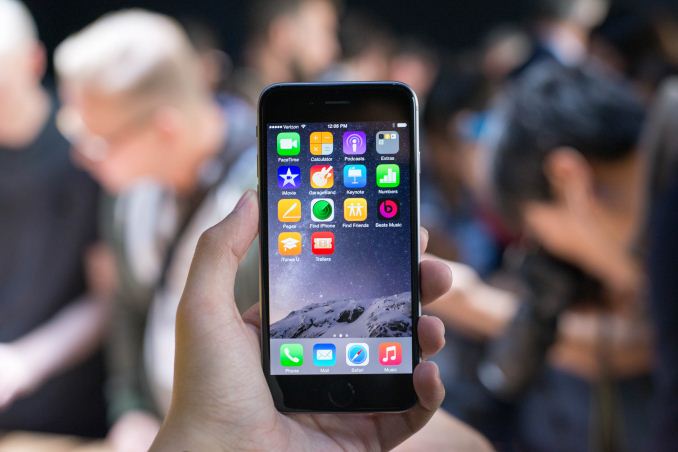
While we’re still working on the full review, I want to get out some preliminary results for the iPhone 6. For now, this means some basic performance data and battery life, which include browser benchmarks, game-type benchmarks, and our standard web browsing battery life test. There’s definitely a lot more to talk about for this phone, but this should give an idea of what to expect in the full review. To start, we'll look at the browser benchmarks, which can serve as a relatively useful proxy for CPU performance.
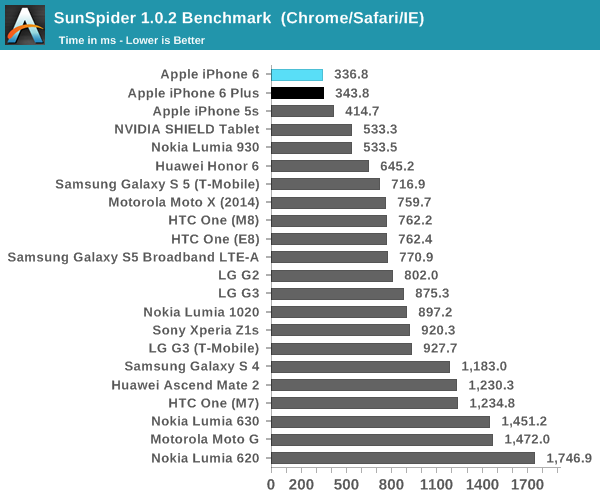
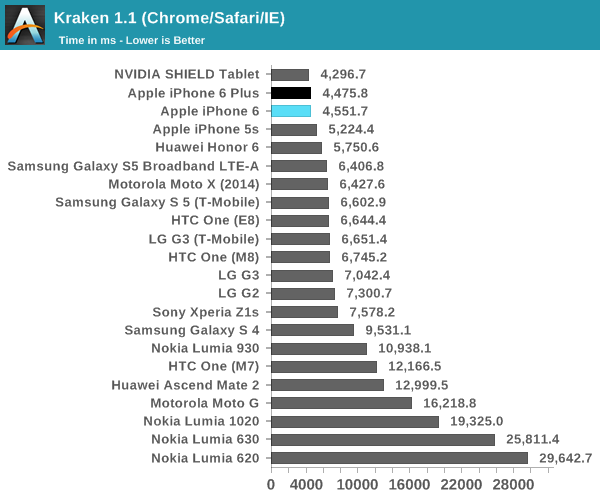
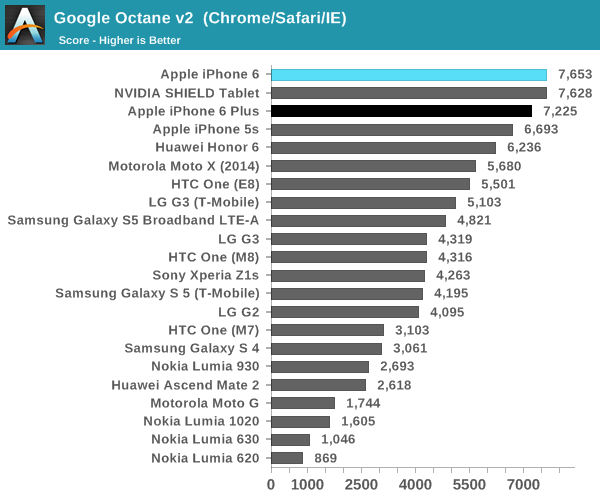
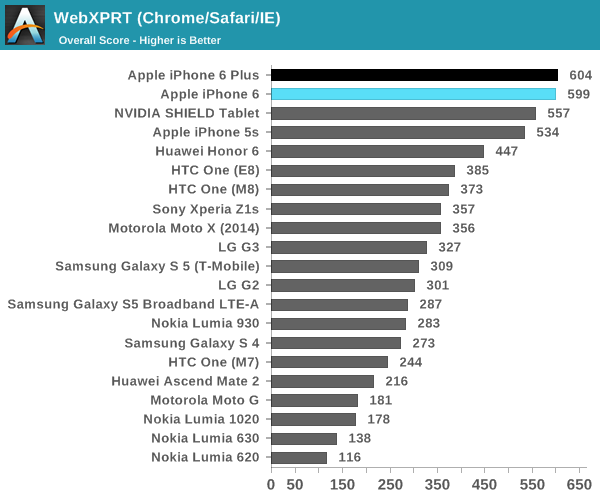
There are a few interesting observations here, as a great deal of the scaling is above what one would expect from the minor frequency bump when comparing A7 and A8. In SunSpider, we see about a 13% increase in performance that can't be explained by frequency increases alone. For Kraken, this change is around 7.5%, and we see a similar trend across the board for the rest of these tests. This points towards a relatively similar underlying architecture, although it's still too early to tell how much changes between the A7 and A8 CPU architectures. Next, we'll look at GPU performance in 3DMark and GFXBench, although we're still working on figuring out the exact GPU in A8.
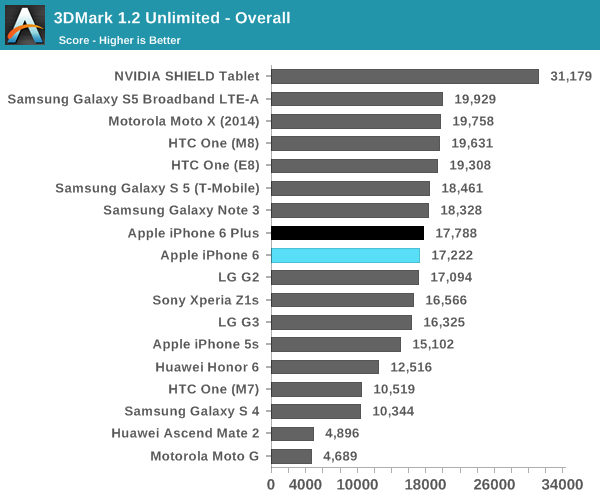
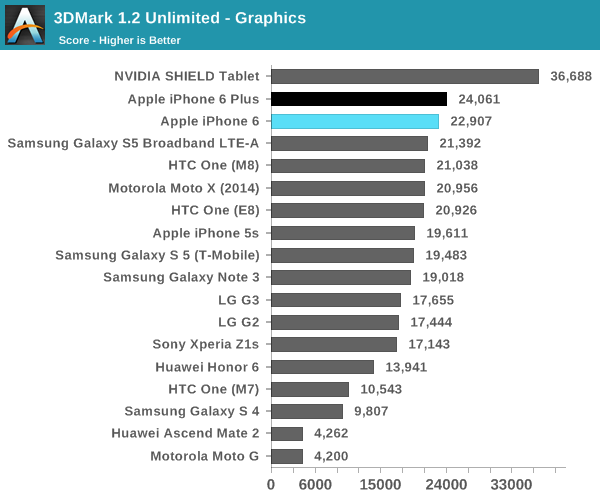
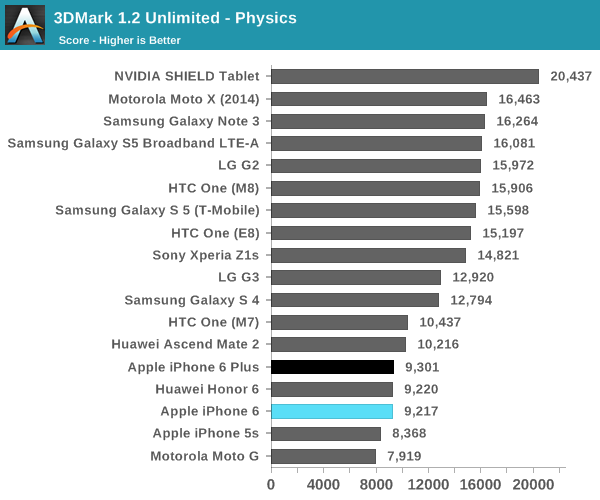
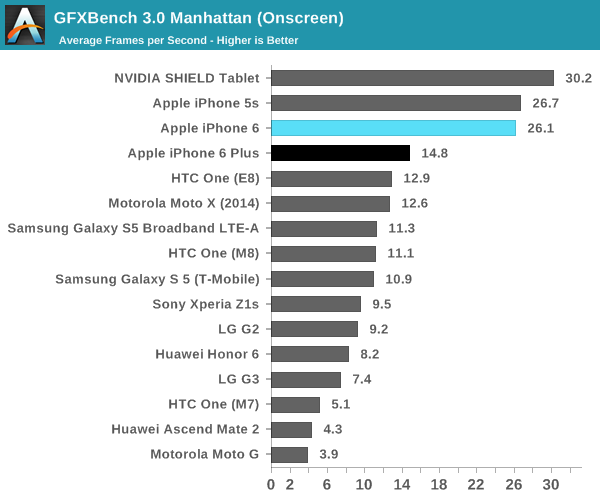
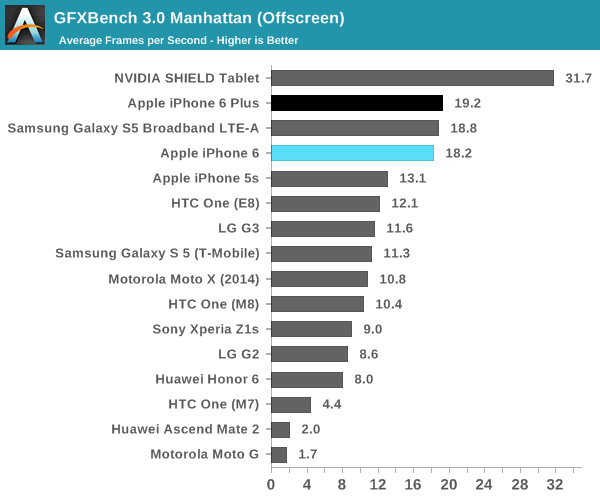
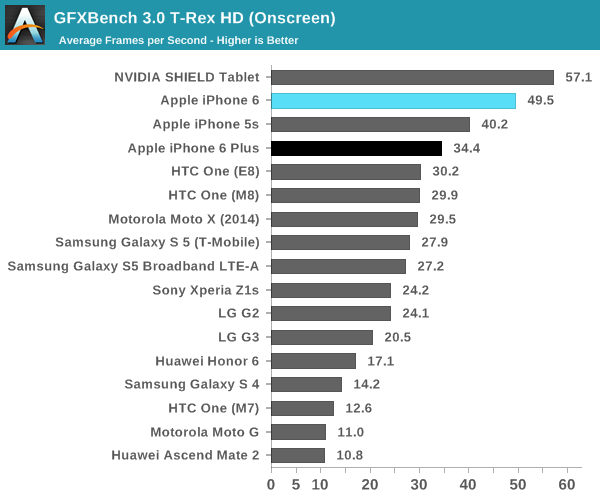
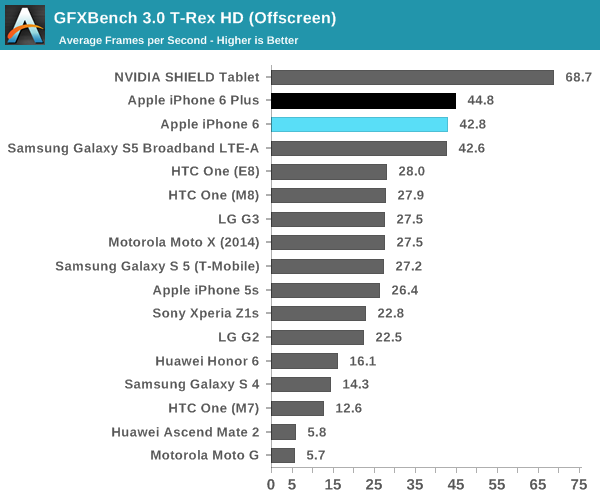
In in GPU benchmarks, we generally see a pretty solid lead over the competition for the iPhone 6/A8. It's seems quite clear that there is a significant impact to GPU performance in the iPhone 6 Plus due to the 2208x1242 resolution that all content is rendered at. It seems that this is necessary though, as the rendering system for iOS cannot easily adapt to arbitrary resolutions and display sizes. Before we wrap up this article though, I definitely need to address battery life. As with all of our battery life tests, we standardize on 200 nits and ensure that our workload in the web browsing test has a reasonable amount of time in all power states of an SoC.

As one can see, it seems that Apple has managed to do something quite incredible with battery life. Normally an 1810 mAh battery with 3.82V nominal voltage would be quite a poor performer, but the iPhone 6 is a step above just about every other Android smartphone on the market. The iPhone 6 Plus also has a strong showing, although not quite delivering outrageous levels of battery life the way the Ascend Mate 2 does. That's it for now, but the full review should be coming in the near future.










316 Comments
View All Comments
JDG1980 - Tuesday, September 23, 2014 - link
You should include a benchmark chart showing how many browser tabs can be opened without thrashing and reloading when switching between them. Maybe this would finally convince Apple to put a modern amount of RAM in their new devices.jacure123 - Tuesday, September 23, 2014 - link
Hey, don't tell AppleAnandtech that.lolTorrijos - Tuesday, September 23, 2014 - link
Maybe you should devise that test and post your results?1) Design a fake website with controlled webpage sizes
2) Load your webpages in tabs, checking everytime if some of your others tabs had to reload
3) Register the number of max tabs open before reloading become necessary
4) Repeat test multiple times to try to average result
5) Repeat test on different devices and platform
6) Prepare illustrations of your results
7) Write article analysing your results
8) Publish
or
1b) Admit that you don't have the patience, time or technical skills to do any of those things, reaching the conclusion that you have no standing to demand for an engineering spec whose implication you cannot judge.
of course there is always
1c) Keep trolling... (optionnal: put a tin-foil hat before adding something about Anadtech being completely controlled by Apple)
ciparis - Tuesday, September 23, 2014 - link
I'd love to see them address that. It's a big failing, and it has left me scratching my head about how Craig, Jony, Phil & co. use their phones, if they haven't been frustrated by this already to the point where adding RAM was a no-brainer. It was a big missed opportunity to further improve the experience of using these devices.danbi - Tuesday, September 23, 2014 - link
Let's just pretend that more RAM does not use more battery power and other resources, such as .. more RAM.When was the last time your iPhone could not perform what you asked it to, because it ran out of memory?
Rapha.194 - Wednesday, September 24, 2014 - link
when you open many tabs in Safari, it starts to update the pages when you alternate between open tabsRoss.shannon@gmail.com - Tuesday, September 23, 2014 - link
Since a huge proportion of 6/6+ buyers will be coming from the iPhone 5, it would be useful if that phone's performance was always included in the graphs.JonCBK - Tuesday, September 23, 2014 - link
Great work, but could you spare the one extra line per graph and include the iPhone 5? In the form of the 5c it is still for sale (and in fact this year as a 5c will probably outsell a number of the models you list above). The 5 and 5c is frequently used and together have outsold even the Galaxy S5, I believe. So it is valuable to see that info. Also your readers are frequently going to be looking at this data to compare the merits of upgrading after two years. (Obviously very common time frame for phones.) So it would be super useful to see this.And if possible, could you do this going forward for all your Apple reviews? Looking back two generations really is part of the story you are trying to tell, especially since two year ownership before upgrade is very common for phones and might be more common for tablets. It is just an extra line in your tables (and you even did it for the battery test) and lets face it that Apple products have a different position in the market from many of the other units you review.
toukale - Tuesday, September 23, 2014 - link
Man, android fans are livid with this preliminary results. Here is the thing android fans, the fact is the current mobile world have apple's hand all over it, whether you want to admit it or not. All current smartphones are using templates from 2007, nothing and I mean nothing has change from that fundamental truth. The current Arm chips that's in everyone smartphones have apple written all over it, it was founded by apple and ARM holdings and served as the basis for the Apple Newton in 1994. Apple sold a lot of their stake when the company ran into financial trouble in 1997. Apple still own a big stake into ARM even today, which might explain why they were able to get 18-24 months jump on everyone for the 64bit ARM chip. This is why most android fans are mad, they just don't want to give apple any sort of credit no matter what. Look, unless android change the current mobile market as far as how we are currently using our smartphones, Apple will always have those things as the pioneer of the modern smartphone. I will not hold my breath for it either since no one in the android camp have the clout for that kind of industry change movement. Have you ever notice what android fans count as revolutionary, NFC, bigger screen, 3gb ram, really! How about market defining things, like you know, forced the industry from bb and their clones blackjack to touch interface.haruhiko - Tuesday, September 23, 2014 - link
Well said, sir. The whole modern smartphone revolution is based on Apple's iPhone. But competitors are now trying to rewrite history, as if Apple didn't start the revolution.